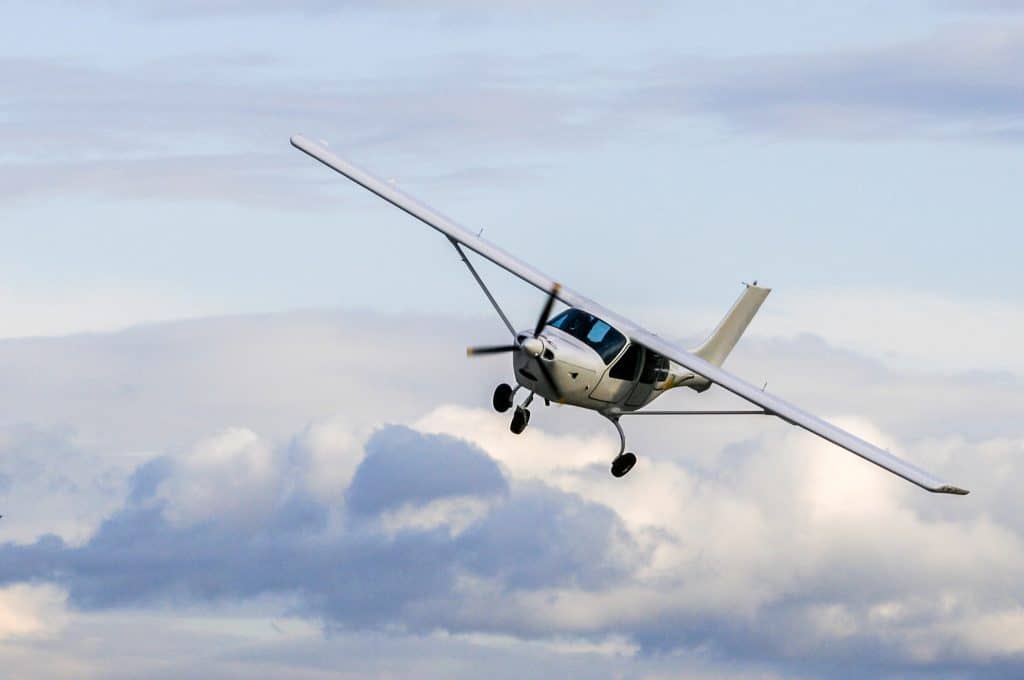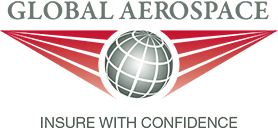Having the right aviation insurance is important for light aircraft owners. Just as important, however, is having an in-depth understanding of what your policy provides and what it does not. Since we provide insurance for aircraft in over 80 countries worldwide—including policies on 30,000 aircraft around the globe—we are continually fielding questions about light aircraft aviation insurance. This gives us a unique perspective on what light aircraft owners understand about their policies and where we can provide additional insight.

Light Aircraft Aviation Insurance FAQ
Below are eight of the questions we are most frequently asked about light aircraft aviation insurance and answers to these important queries.
- Does an aircraft with a good safety record mean lower rates for aircraft insurance? Each insurance provider has its own perspective on the “safety record” of different aircraft, and the “cost to repair” associated with each. So, a good safety record combined with low repair costs can have a favorable influence on insurance costs. If you are considering the purchase of an aircraft, it’s important to discuss your choice with an aviation insurance specialist before you buy to avoid any surprises after the fact. You don’t want to complete a purchase and subsequently learn that the cost to insure your new aircraft is higher than you expected.
- What is Breach of Warranty in aircraft insurance? Breach of Warranty provisions are often required by a financial institution that holds a lien on an aircraft. They are often added by endorsements that revise the basic policy, and provide a mechanism for the lienholder to be compensated for its financial interest in the insured aircraft if a loss is otherwise excluded by the policy. For example, if a pilot who does not meet the pilot experience requirements of your policy flies and damages your aircraft, your insurer might deny compensation to you but still provide compensation to the lienholder.
- Does my insurance policy cover pilots flying under BasicMed? BasicMed allows pilots to fly without holding an FAA medical certificate as long as they meet certain requirements. How insurers address the operation of insured aircraft under BasicMed varies from carrier to carrier, pilot to pilot and aircraft to aircraft. Most carriers recognize and approve BasicMed to some extent. However, you shouldn’t assume that you will be covered if you are flying without an FAA medical certificate. You should check with your broker in advance of operating under BasicMed to verify acceptance.
- Does my aircraft insurance policy include aviation premises coverage? Premises coverage affords insurance for property damage or bodily injury that occurs on a portion of an airport that a pilot or operator occupies as allowed under a written or oral agreement with the airport owner. Many light aircraft policies include some form of premises coverage, which is often required by the airport. You can determine if you have this coverage by reviewing your policy documents or talking with your broker.
- Is my homebuilt/experimental aircraft covered for its first flight? As you build an experimental aircraft, your insurance coverage should evolve as the aircraft evolves—from “ground not in motion” to a “full flight” policy. Whether your aircraft is covered for its first flight depends on the carrier. Few insurers offer first flight coverage, so it’s important to discuss this with your aviation insurance specialist in advance of any flight activity. The fact that you’ve had a policy in place up to the point of your first flight is not a guarantee that you will have coverage when the aircraft takes off for the first time.
- Does my aviation insurance policy have a deductible? Modern light aircraft policies usually include no physical damage deductible. However, if your aircraft is a seaplane, a deductible should be expected. You should review your policy documents to determine if you have a physical damage deductible. If you’re still unclear after reading your policy, or need further explanation of your insurance costs, your insurer or broker can help.
- What is an Open Pilot Warranty (OPW)? An OPW sets the minimum qualifications for a pilot who is not specifically named as an approved pilot on the policy to act as pilot in command (PIC). The OPW lists hours and ratings, and provides that if a pilot who meets those requirements flies the aircraft with your permission and within the scope of your policy you are protected if an incident occurs. This doesn’t mean that the pilot has coverage. They should consider having non-owned aircraft insurance of their own.
- What is a “combined single limit of liability” or “smooth” limit? Aircraft insurance policies may have liability sub-limits applicable to each passenger. These sub-limits are the most that the insurer will pay for each passenger’s claim for bodily injury. A combined single limit of liability—sometimes referred to as a “smooth” limit—means that no sub-limits apply and the full policy limit is available.
Knowledge is Power… and Peace of Mind
Understanding your light aircraft aviation insurance empowers you to fly with confidence. That knowledge also provides peace of mind for pilots who know that should an incident occur, their insurer will be there for them.
We strongly encourage the aircraft owners we work with to carefully review their policy with each renewal and contact us or their broker with questions. The time involved in going through a policy from start to finish is an investment in being a wise insurance consumer.
We also remind owners that the best way to keep their insurance costs down is to operate their aircraft safely. To that end, our SM4 Safety program, and the variety of resources it provides, is a valuable asset to Global Aerospace customers.
About Global Aerospace
Global Aerospace is a leading provider of aircraft insurance and risk management solutions for the aviation and aerospace industries. Our over 95 years of aviation insurance experience enable us to develop customized insurance programs structured around the needs of our clients. Recognized for our industry leading customer service, we serve as a trusted partner to a diverse range of aviation businesses and their insurance producers. https://www.global-aero.com/
Global Aerospace Media Contact
Suzanne Keneally
Vice President, Group Head of Communications
+1 973-490-8588
###KISSPR.COM PRESS RELEASE NEWS DISCLAIMER ###
This news has been published for the above source. Kiss PR Brand Story Press Release News Desk was not involved in the creation of this content. KISS PR and its distribution partners are not directly or indirectly responsible for any claims made in the above statements. Contact the vendor of the product directly.
https://story.kisspr.com
Release ID: 14975

